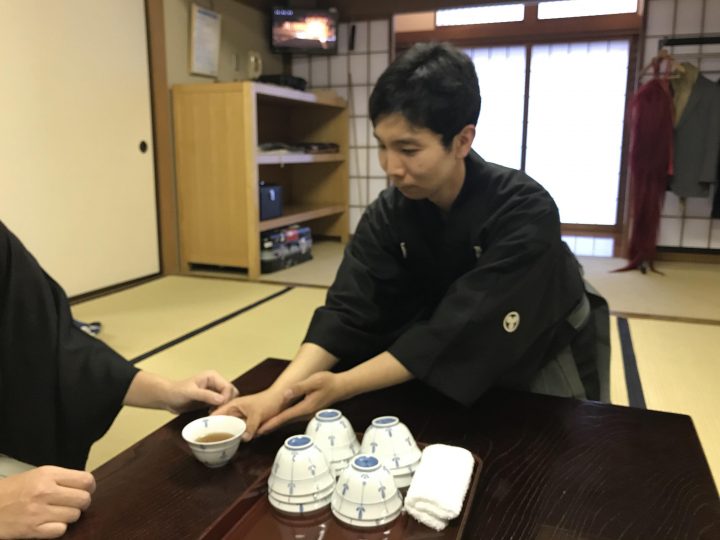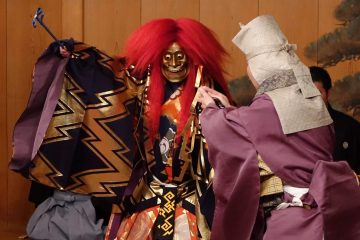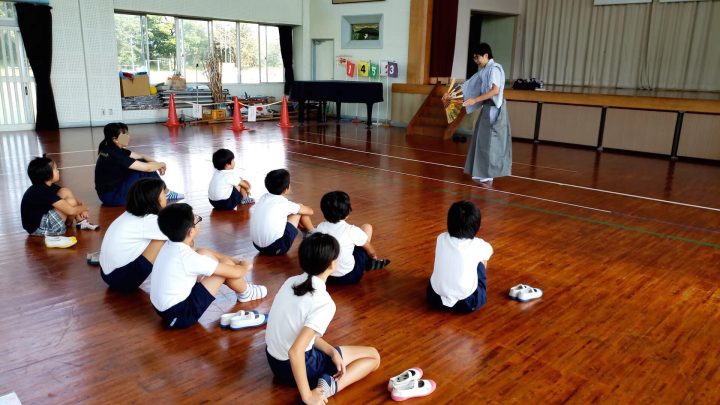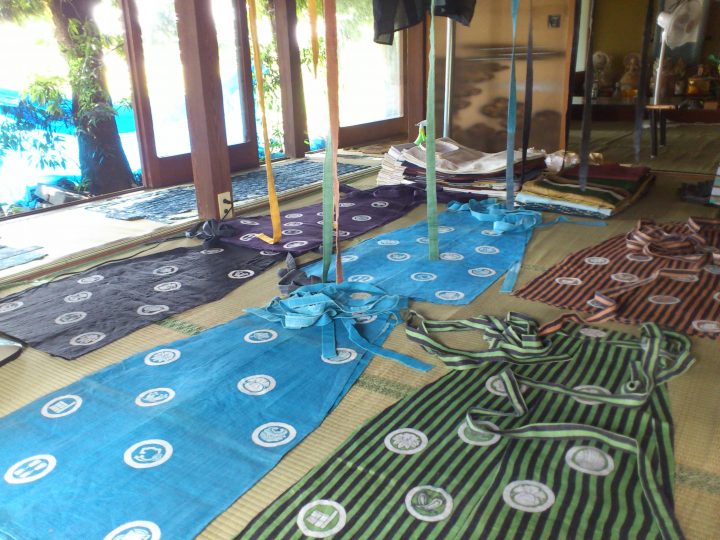Momoko Shirakami, Kanta Nakamori, and Hideki Izumi talk about Kanagawa Classic Project 2014 "Dancing at Enoshima"
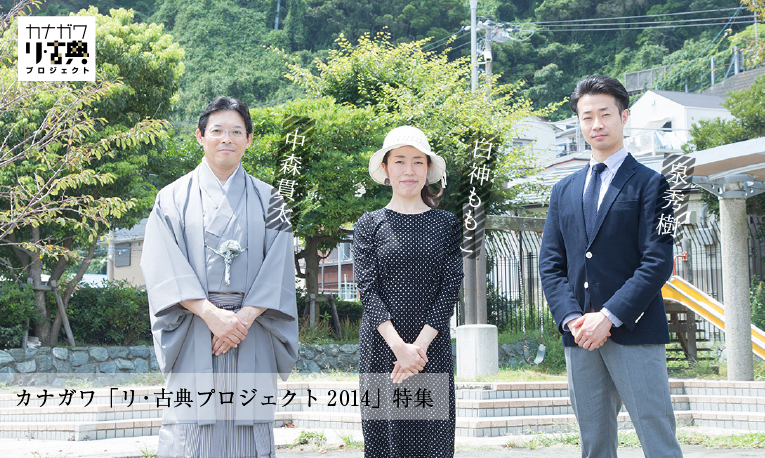
Momoko Shiraga
Choreographer. Director. Founder of Momonga Complex. He started learning classical ballet at the age of six, but gradually began to have a complex about beautiful things and started creating his own works. He calls his own group Momonga Complex a dance performance group, focusing on the edges of the world through dance-like activities. He is well-known for his choreography and direction that proactively incorporates meaninglessness and waste to create unique spaces, and in addition to his company activities, he is involved in a wide range of activities, including choreography for workshops and the play "My Star," direction and choreography for the musical "Fanfare," and the composition and direction of the parade at the Kitakyushu Theater Festival.
Kanta NAKAMORI
Born in 1961. Graduated from the Tokyo University of the Arts Special Course. Noh actor, Kanze school shite actor. Director of the Kamakura Noh Stage (Public Interest Incorporated Foundation). Member of the Kanze Kyukokai (Public Interest Incorporated Foundation). Studied under his late father, Nakamori Shozo, and Kanze Yoshiyuki. Actively involved in promoting Noh through performances sponsored by the Kamakura Noh Stage and Noh classes for students. Designated as an Important Intangible Cultural Property, member of the Japan Noh Association. Lecturer at Keio University Shonan Fujisawa Junior and Senior High School.
*Kamakura Noh Stage Founded in 1970 with the aim of promoting and disseminating the traditional Japanese culture of "Nohgaku" (a UNESCO Intangible Cultural Heritage). Certified as a public interest incorporated foundation (Kanagawa Prefecture) in November 2011.
Hideki IZUMI
Born in Kamakura City. From an early age, he studied under the second head of the Izumi school, Tokuemon Izumi, and began his path as a dancer. In 2013, he won the top prize at the New Year Dance Competition, a joint dance competition of various schools, sponsored by the Ministry of Education and the Japanese Dance Association, a public interest incorporated association. He will succeed the third head of the Izumi school at the name succession performance to be held on September 6th and 7th, 2014. While continuing to train in Japanese dance, he has also participated in the 21st Century Gebageba Dance Company since 2011, exploring expression and the body by moving back and forth between Japanese dance and dance.
Interview: Masamasa Nishino Text: Akiko Inoue Photo: Eri Nishiyama
The second part of the Kanagawa Re-Classic Project, a project to "Re" the cultural heritage of the region as a cultural art that lives in the present day, will be held at Enoshima, a historical tourist spot by the sea. The site-specific time and space where various "dances" rooted in the prefecture gather will be directed by Momoko Shirakami, the leader of Momonga Complex, who is known for her loose and humorous choreography. This year's "Re-Classic Project 2014 Enoshima Maude Maiodori" will be held on Saturday, October 4th, the same day as the annual "Eno Fes". The collaboration of contemporary dance and Noh, two genres that are both pulsating in the present day but rarely intersecting, and the addition of folk arts representing the five regions of Fujisawa, Odawara, Sagamihara, Miura, and Yokosuka, will be a valuable opportunity to explore the richness and potential of Kanagawa's dance.
We spoke with three people about this event, which is currently in the midst of trial and error: director Shirakami; Kanta Nakamori, a Kanze school Noh performer who is also actively involved in promoting Noh, including managing the Kamakura Noh Stage; and Hideki Izumi, who has a background as the head of a Japanese dance school but is also active as a member of the 21st Century Gebageba Dance Company.
What are the roots of these three artists' artistic expression?
- Thank you for gathering here today. I'd like to start by asking you a few questions. How many times have the three of you met together?
Shirakami-san and Izumi-san have been friends since their school days, right?
Shirakami: Yes, we were classmates in college. This is the second time I've met Nakamori-san.
Nakamori: We met previously at the Kanagawa Prefecture Cultural Affairs Division, and I had the opportunity to say hello to you then.
- I think that the second Re-Classic Project "Enoshima Mau-de Maiodori" is a completely new project that is being created from scratch, so I'm very curious to see what kind of event it will be. Before I get into the details, I'd like to ask everyone to briefly introduce themselves.
Now, let's start with Shirakami-san.
Shirakami: I originally grew up in a normal family, but from a young age I would go see my father perform in small theater productions, and my mother, who was crazy about Takarazuka, would often take me to see Takarazuka. As for dance, when I was little I couldn't decide between Japanese dance and ballet, and I started ballet because I loved ballerinas' feet. But in college I wanted to study production, so I studied art management and the like.
- That's where you met Izumi, right?
Shirakami: That's right. When I enrolled at J. F. Oberlin University, the Faculty of Arts had only just been established, so the faculty's existence was not well known even on campus. People would look at us like, "Who are those people in tracksuits?", so the seniors one year above me came up with an outdoor project to "make something like a festival with dance and live music" to make themselves known. Since there weren't many people doing dance, I was entrusted with choreography, and it was a simple idea, but I got carried away with the idea that "people will be happy if I make something..." and that's how I got to where I am today.
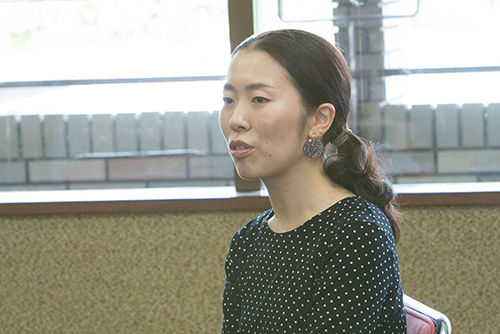
- So, Izumi-san, you were doing traditional Japanese dance at home, and contemporary dance at university, wearing tracksuits with Shirakami-san and others?
Izumi: That's right. Rather than dancing in a tracksuit, I was cutting plywood for art (laughs). I was born in Kamakura, and my family does Japanese dance, so I grew up exposed to Japanese dance without loving or hating it. There were times when I got tired of it, but I thought that since I was born into this family, I should study dance properly, and so I started studying. Later, I entered university and interacted with various people, including Shirakami-san, and I realized that I had to become a person who could express myself properly through Japanese dance, and I have continued to do so until now. It has been 10 years since I graduated from university, but from now on, I would like to fully absorb Japanese dance, which is my art, into my body and understand it with my heart. I had the opportunity to visit Enoshima Shrine to pray for the succession of the head of the school. Also, I am always grateful to the people of Kanagawa Prefecture, so when I heard about this project, I thought it would be interesting. I participated in this project with the hope that it would be an opportunity for people from various genres to gather and bring together the performing arts of Kanagawa Prefecture.
- Thank you. Finally, Nakamori-san, please.
Nakamori: Our world of Noh has been around for a long time, but our family is quite new, having been in this business since my father's generation. I was an only child, so naturally I took over as the heir and have been performing Noh since I was three years old, for 50 years. My father really disliked the idea that Noh should be watched by people who already knew about it, so our group chose to move forward in a way that specialized in popularizing Noh, with the awareness that we needed to continue to sow the seeds in order to make it known to the general public.
Although we received criticism from people who thought that Noh was something lofty, we have been performing at schools since the 1960s. However, now we have been recognized, and thanks to that, we have been certified as a public interest incorporated foundation, and my father himself has even received the national Regional Cultural Merit Award.
I have continued my activities up to this point, taking over that stance of promoting the technology.
I myself take on the lead role in over 30 songs a year, have been designated an intangible cultural asset, and have thankfully received a fair amount of recognition.
I have been participating in this "Re-Classics Project" since the first event, and I have always owed a lot to Kanagawa Prefecture, so I would like to give back in some way.
- Thank you.
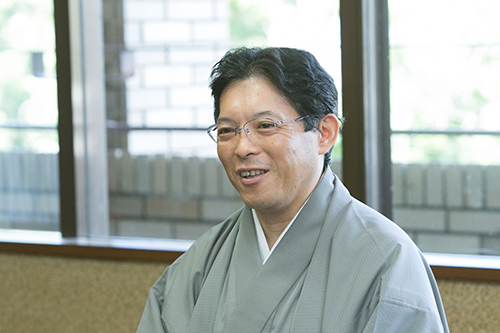
Classical Arts x Contemporary Dance
- Now, I would like to hear about this project. I understand that the Kanagawa Prefectural Cultural Affairs Division first approached you about this project, and that you introduced director Shirakami. You are active in both Japanese dance and contemporary dance, but were you always conscious of wanting to fuse traditional arts and contemporary dance like you did this time?
Izumi: To put it bluntly, I believe that ultimately there are probably no barriers in the performing arts, and that there is something in common at their core. I have always thought that by combining the two forms of expression, there is something that can be brought out from each other.
When I heard about this project, I thought that in order to bring together various performing arts in one place, if each group were to take turns performing, it would not be well received by the audience, so I introduced Shirakami, who can properly direct the overall event, as the ideal person for the job.
- So it's not enough for it to just be interesting, you want it to have a proper concept?
Izumi: Or rather, I think it has to be made interesting.
In other words, I think it will be difficult to present the performances to each audience - those who come to watch Noh, dance, and folk performing arts - in a way that allows them to digest them, rather than simply lining them up and saying, "Here you go." If people take the opportunity to see a variety of performing arts, not just the ones they came for, and find them interesting, and if the performers also feel proud of the performing arts they are involved in, I think it will be an even better project.
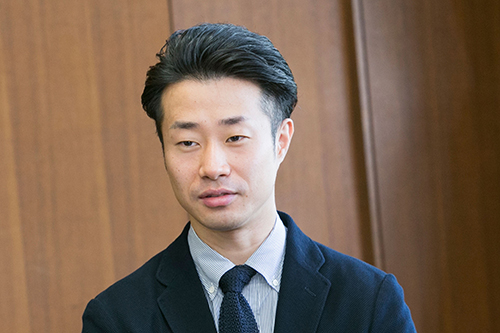
- I see. As you just mentioned, this time there are quite a large number of people participating, including dancers, musicians, local performing arts artists, and Noh performers. By the way, was it decided from the beginning that folk performing arts artists from all over Kanagawa Prefecture would participate?
Shirakami: Yes, that's the foundation, or rather, it's the main focus. When we first heard about the idea, the Culture Section spoke enthusiastically about how they wanted to bring together a lot of locally rooted dance and performing arts, like the "Yokosuka Tiger Dance" and Miura's "Chakkirako," and do something together.
So I wondered if there was some way to make a story out of all of those people gathering together, and came up with the idea of "people from all over Kanagawa coming to Enoshima to perform their local dances" as a sort of hometown pride. I also thought it would be great if tourists who came to Enoshima for sightseeing could watch the dances as they came to pray, and then dance at the end before leaving.
At the end of the play, Nakamori-san performs a Noh piece called "Enoshima." It's actually a major piece that's about two hours long, but we asked him to shorten it to 15 minutes...
Nakamori: Noh is not suitable for collaboration because you cannot change the direction of the performance. For example, it would not be so difficult to split the performance into two parts, such as a pause and inserting something in between, but the rule is that you cannot perform two things on stage at the same time, so it is a form of theater that goes completely against the concept of this project. However, since we have a song called "Enoshima" and the venue is Enoshima, we would like to hold this performance as a kind of wedding ceremony, which will also serve as a final celebration.
- Is it normal for things to be shortened to this extent?
Nakamori: In the first half of "Enoshima," there is a scene that talks about the creation of Enoshima for nearly an hour. This time, we will omit that and only do the second half, so I think it is not a shortened version. I happened to have performed it before, so I was able to accept it with ease, but the song "Enoshima" itself is a song that you rarely see. By the way, due to problems with the space on the stage and the level adjustment of the microphones, we will record the musical accompaniment this time. However, if the sound source is properly recorded in a studio like this time, I think it will be easy for the audience to listen to. Normally, Noh is rarely performed with a recording, but I think that it will be an appeal of a new way of doing things, as Noh itself will need to change in the future.
- I understand that your school has been flexible in spreading Noh to many people since your father's generation. I imagine that your attempt to use this recording is also a reflection of your previous generation's understanding.
Nakamori: Actually, I have done this before. But using recordings is based on the principle of not reusing them. Basically, I don't reuse them.

- I see. I had a strict image of Noh, so I was surprised to hear that you have been making various efforts since your father's time, such as incorporating laser beams and using a transparent stage, including for this recording. I also heard that you have experience performing with the Kanagawa Philharmonic Orchestra.
Do you have any thoughts about performing with Shiragami and other artists in the genre known as contemporary dance?
Nakamori: When I heard about it, I thought it would only work as a play within a play. For example, if we were to exchange lines at the same time, it would just be a "play performed by Noh actors," and we wouldn't be able to meet the expectations of the audience who come to see Noh. But of course, I don't think it's a bad thing to do something proper and arrange it as a different genre. I hope that this will inspire people to want to see authentic Noh. However, this will take a lot of time, so if there is an opportunity to spend a year or two creating a proper script with Shiragami-san, I would of course be happy to cooperate.
- It would be fantastic if something like that could happen as a result of the "Re-Classics Project."
Shirakami: Yes, I hope there will be an opportunity to spend more time on it.
Nakamori: It's not good to tamper with existing songs, so I'd like to do it in the form of a new song.
Of course, I may be criticized for doing so, but in the future I would like to do something that will make me think that it was worth doing.
- So that's how it changes with the times. By the way, I heard that you are also teaching Japanese dance this time.
Izumi: Yes, I will be appearing in the show too.
Shirakami: This time I came up with the character "Shirasu Five Men." The name was a combination of Enoshima's specialty whitebait and "Shiraha Five Men" (note: the common name for a kabuki performance depicting the exploits of some of Japan's most notable thieves) , and I'd like Izumi to act as one of the men while watching the movements of the five men. By the way, the number "5" is also inspired by the five-headed dragon (note: a dragon that lived in a lake that was once located in Fukazawa, Kamakura City, Kanagawa Prefecture) .
Izumi: When you do Japanese dance, you have to wear a kimono. So usually, the costume and the floor are deeply related. That's the same with Noh.
Nakamori: It's the same. First of all, the floor has to be flat.
Izumi: However, with the new character setting of "The Five Shirasu Men" and the irregularity of an outdoor venue like this time, I would like to take on this as an opportunity to try out how I can make use of what I have cultivated in Japanese dance in such a situation.
- I'm curious to see what the movements will be like. How will elements of Japanese dance and contemporary dance be incorporated into the movements?
Izumi: I think that the characters stand out better when the audience feels that it is a "typically Japanese" movement and it emerges as a metaphor, rather than as a traditional Japanese dance. Rather than saying, "This is traditional movement," I hope that since we have gathered people from various fields, we can explore what we can express with our own bodies.
Exploring Enoshima - Sensations evoked through physical experience
- Is there an overall image you want to convey this time, or a scene that you want to emphasize?
Shirakami: This project is an experience for visitors to tour Enoshima and then ultimately watch a performance at Samuel Cocking Garden, but rather than just going, watching, and going home, I hope that the experience of touring Enoshima itself will become a memory for each person who is there. The performers will also be traveling towards Samuel Cocking Garden, so I hope that their performance will remain as a "picture" for those who see the scene.
Specifically, as the audience prays at the shrine from the bottom to the top, they are taught dances by the performers along the way, and at the end of the performance, they can combine the dance parts to dance the Bon Odori. So I hope that the audience themselves will come to dance and enjoy the performance.
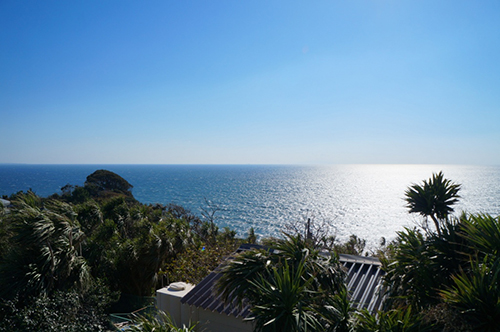
The view from the venue (inside Samuel Cocking Garden)
Shirakami: There are people like Nakamori and Izumi who live in every corner of their lives and cultivate Japanese culture every day, but for people like me, for whom even everyday Japanese culture like sliding doors and kimonos have become distant from our daily lives, I wonder how much of Japanese "movement" or the senses passed down from the people of the past remain. But this time, the climbing path leading to Samuel Cocking Garden is the same path that our ancestors walked up, in terms of topography, and I thought that following the same path as the people of the past would lead to experiencing those physical sensations. Just like traditional performing arts people follow the physical path of choreography passed down from their ancestors every day. That's why climbing the stone pavement of Enoshima is very important, and I think it links to "traditional performing arts," which is the theme of this time. For that reason, I really don't want you to ride the escalator (laughs).
Additionally, Kanagawa Prefecture also has some truly fascinating traditional performing arts, so I would definitely recommend checking them out as well.
Izumi: In Japan, everything from lifestyle to culture was once cut off. However, Noh, Japanese dance, and other performing arts that have been passed down in local communities were directly passed down and nurtured by parents and local elders. If this were to be cut off, it may be possible to preserve it on video, but you cannot receive it 100%. Therefore, the fact that there are things that have been passed down from person to person is a precious thing, and I hope that those involved in it will be proud of it.
As Shiragami-san says, Enoshima has had a shrine since ancient times, and has a history of being a place where people have traveled and loved. There is a significance in the fact that Enoshima has remained in this place for so long, and I think there is something that can be felt by tracing that history.
Nakamori: I think that by walking you can get the sense that people in the past walked here in the same way, saw the same scenery, and got to where they are today.
- By the way, is there a set course or schedule for this event?
Shirakami: There are no particular time restrictions, so we encourage people to explore at their own pace.
For example, when people see the Sasara Dancers in matching yukatas, they might think, "Oh, is there something going on today?" In the same way, I hope that people will see the performers blending into the Enoshima scenery as part of it.
- I hope you all will experience the one-day Enoshima that you color. Finally, I would like to close by asking each of you to give a comment.
Shirakami: By participating in this project, I learned about traditional performing arts that I knew nothing about, and by visiting actual studios, I was able to see that so many traditional performing arts still remain in people's lives in Kanagawa Prefecture, and are being passed down from parents to children and young people. I was amazed by this experience, and I hope that the audience can have the same experience. Also, because the setting is Enoshima, I think that some people will come as a leisure visitor to experience something that they would normally only be able to see at a theater. I hope that this will be a good opportunity for people to learn about traditional performing arts through these various experiences.
Nakamori: I hope that this will be a good opportunity to get people interested in the classical culture of their own country. Also, we don't have any horizontal connections at the individual level, so just as I was able to meet people like Shirakami-san and Izumi-san on this occasion, I think that by continuing this event several times, various communities will be formed, which will continue to expand and more and more possibilities will be born. I hope that this event will be a kind of trigger to spread such movements nationwide.
Izumi: I also have high hopes for the horizontal connections that Nakamori-san just mentioned, and the stimulation that comes from the involvement of many genres, and I hope that this project will continue to develop in the future. Also, if projects that introduce various cultural assets in this way can be seen by more visitors, I think Kanagawa Prefecture will become a more enjoyable region. I would like to make this Enoshima event a fun one as well.
- The weather was our biggest concern, but we were blessed with sunny skies and we are looking forward to seeing how Enoshima will be colored.
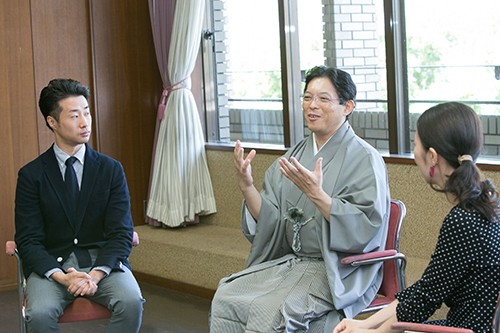
The following event has ended.
< overview >
Kanagawa Classic Project 2014 Enoshima Enoshima Mude Dance
Saturday, October 4th Doors open at 16:00 Performance begins at 16:30 (Ends at 18:00)
Free admission
*However, admission to Enoshima Samuel Cocking Garden (200 yen for adults, 100 yen for children) is required separately.
*If the event is canceled due to bad weather, a rainy day program will be held the following day, the 5th (doors open 13:30, performance begins 14:00) at the Kanagawa Women's Center.
Related projects
○ Explore the charm of Enoshima through the landscapes and people depicted in ukiyo-e!
Lecture & Workshop Enoshima Sketch Walk
Saturday, September 20th 13:00-16:30
* In case of bad weather, the event will be postponed to the 21st (Sun).
○ Explore travel conditions and clothing in the Edo period!
Historical Guided Tour: Enoshima Road Time Slip
September 27th (Sat) 13:00-16:30
* In case of bad weather, the event will be postponed to the 28th (Sun).
